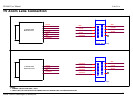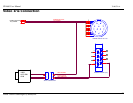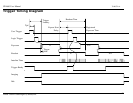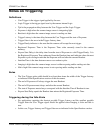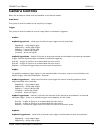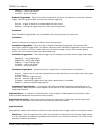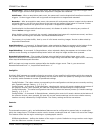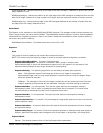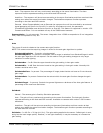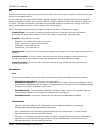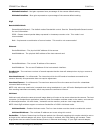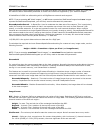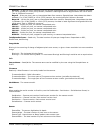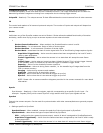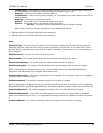
GX1660 User Manual
70-0057A-A
Allied Vision Technologies (Canada) Inc.
36
does not support Jumbo Packets/Frames of at least 8228 Bytes (the camera default on power up), then you
will need to reduce PacketSize parameter to match the maximum supported by your network adaptor.
A PacketSize of 1500 is a safe setting which all GigEthernet network cards support.
NOTE: If you are seeing all “black images”, or all frames reported as StatFramesDropped and zero images
reported as StatFramesCompleted, you will likely need to decrease this parameter.
StreamBytesPerSecond – In Bytes/Sec. Used to moderate the data rate of the camera. This is particularly
useful for slowing the camera down so that it can operate over slower links such as Fast Ethernet (100-
speed), or wireless networks. It is also an important control for multi-camera situations. When multiple
cameras are connected to a single Gigabit Ethernet port (usually through a switch), StreamBytesPerSecond for
each camera needs to be set to a value so that the sum of each camera’s StreamBytesPerSecond parameter
does not exceed the data rate of the GigE port. Setting the parameter in this way will ensure that multiple
camera situations work without packet collisions, i.e. data loss.
115,000,000 is the typical data maximum data rate for a GigE port.
To calculate the required minimum StreamByetsPerSecond setting for a camera in any image mode, use the
following formula:
Height x Width x FrameRate x Bytes per Pixel (see ImageFormat)
NOTE: If you are seeing occasional “black images”, or occasional frames/packets reported as
StatFramesDropped/StatPacketsDropped you will likely need to decrease this parameter.
StreamHold
For controlling when the camera sends data to the host computer. Normally the camera sends data to the host
computer immediately after completion of exposure. Enabling StreamHold delays the transmission of data,
storing it in on-camera memory, until StreamHold is disabled.
This feature can be useful to prevent GigE network flooding in situations where a large number of cameras
connected to a single host computer are capturing a single event. Using the StreamHold function, each
camera will hold the event image data until the host computer disables StreamHold for each camera in turn.
StreamHoldCapacity - Read only. The total number of image frames that can be stored in the camera
memory. Dependent on the camera internal memory size and TotalBytesPerFrame.
StreamHoldEnable - Enables StreamHold functionality. When disabled, the image data will be released
to the host computer.
ImageFormat
ROI - Region of Interest. Defines a rectangular sub-region of the image. Selecting an ROI that is small can
increase the maximum frame rate and reduce the amount of image data. The following parameters define the
size and location of the ROI sub-region:
Height - In rows. The vertical size of the rectangle that defines the ROI.
RegionX - In pixels. The X position of the top-left corner of the ROI
RegionY - In pixels. The Y position of the top-left corner of the ROI
Width - In columns. The horizontal size of the rectangle that defines the ROI.
PixelFormat - The various pixel data formats the camera can output. Not all cameras have every mode:
Mono8 – 8 bits per pixel, monochrome. On camera interpolation, with luminance (Y) channel returned.
For 10 bit (CMOS) or 12 bit (CCD) sensors, the most significant 8 bits are returned.



